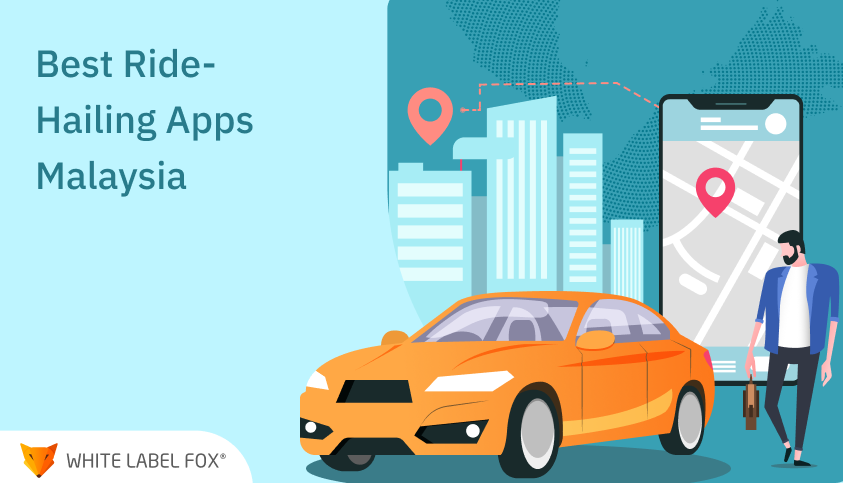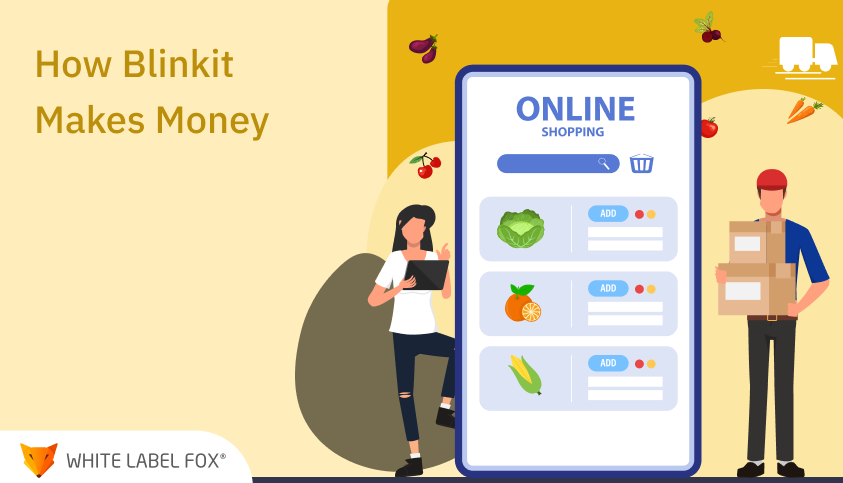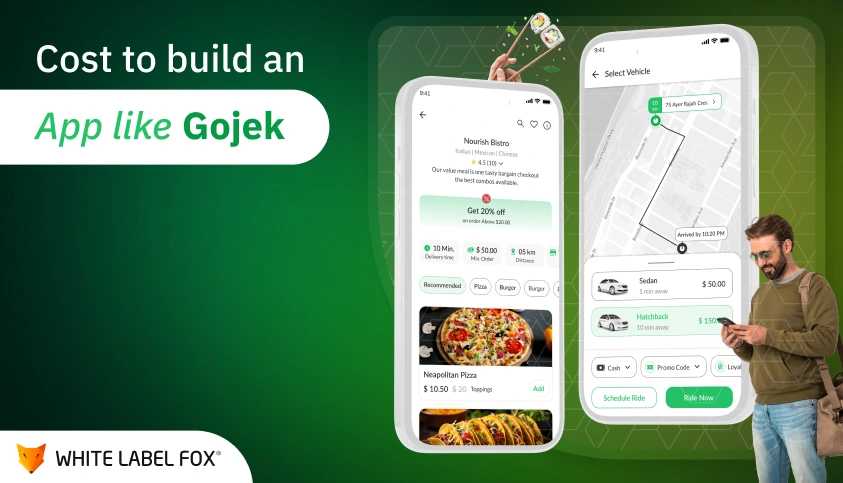The COVID-19 spread has brought online grocery business a promising but fore niche industry. Most customers these days prefer to stay at home and order groceries and other daily essentials through an app like Grofers. The essential goods have made online grocery delivery services from Amazon, Walmart, Instacart, and more popular.
The eMarketer report represents that the growth of the online category accelerated over previous expectations during 2020. Due to the pandemic spread, tens of millions of customers became online buyers, and they used to purchase everything online, starting from food to groceries and much more.
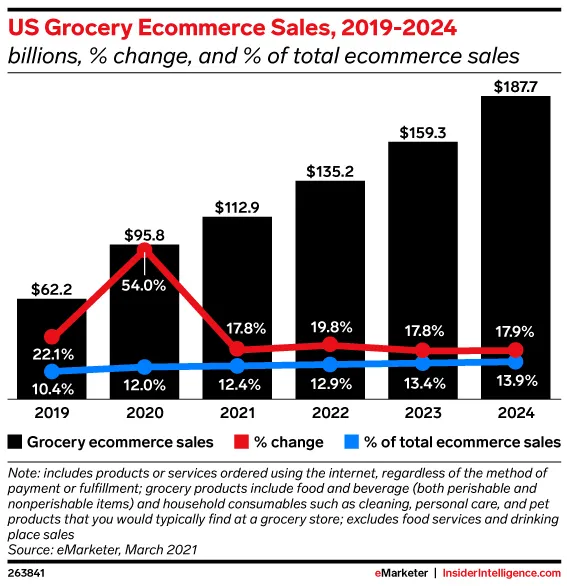
The pandemic pushed more and more shoppers to search for a convenient and safe way to get all the essential grocery items. With the growing number of stores providing delivery and pickup options through the grocery delivery app, it becomes easier for customers to order various options and incentives to order essential groceries online.
Grofers History and Success Timeline to Look into!
An Indian on-demand grocery delivery service, Grofers, was founded in 2013. The m-commerce marketplace for your daily shopping is based out of Gurgaon. The company raised $535.5 million in 2018, the leading was SoftBank with 200 million, Sequoia Capital, and Tiger Global also invested in Grofers.
Do You Want To Start Your Business For Grocery Delivery?
Let's Discuss Your Grocery Delivery Business Idea!
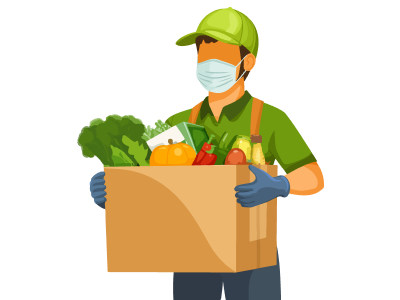
Grofers makes it easier for users to purchase groceries from their favorite store and get delivery within minutes. An app like Grofers helps customers purchase bakery items, pet care, baby care, fruits & vegetables, and much more. You can get every essential delivered instantly or schedule it for later as per their convenience.
Grofers, the Indian grocery delivery service, had a comparative market share of 2% in 2020. The growth has increased market share; the company name was founded by combining “grocery gophers.” The leading grocery startup had 53.4 Cr revenue in 2018; Grofers follow a unique business model that ensures business growth and success.
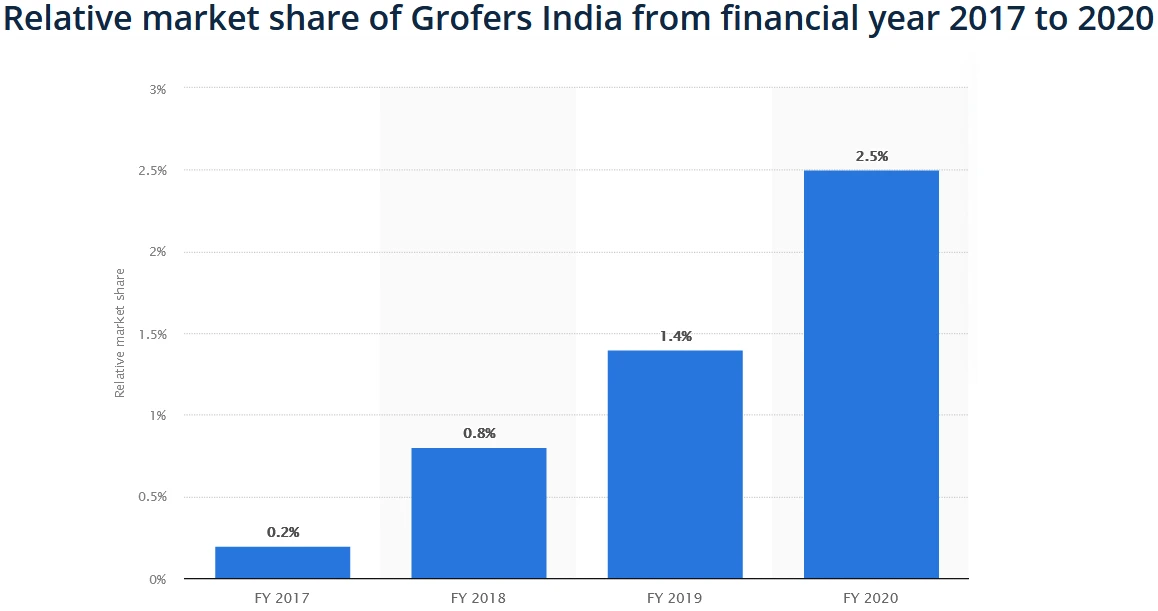
Looking to eCommerce market success, many grocery outlets are investing in an all-in-one delivery solution. The easy-to-use interface of digital solutions helps you address all your business and customers’ requirements systematically. It enables you to offer an amazing service experience to customers whenever they want. Let’s have a quick look at the funding history of Grofers right away.
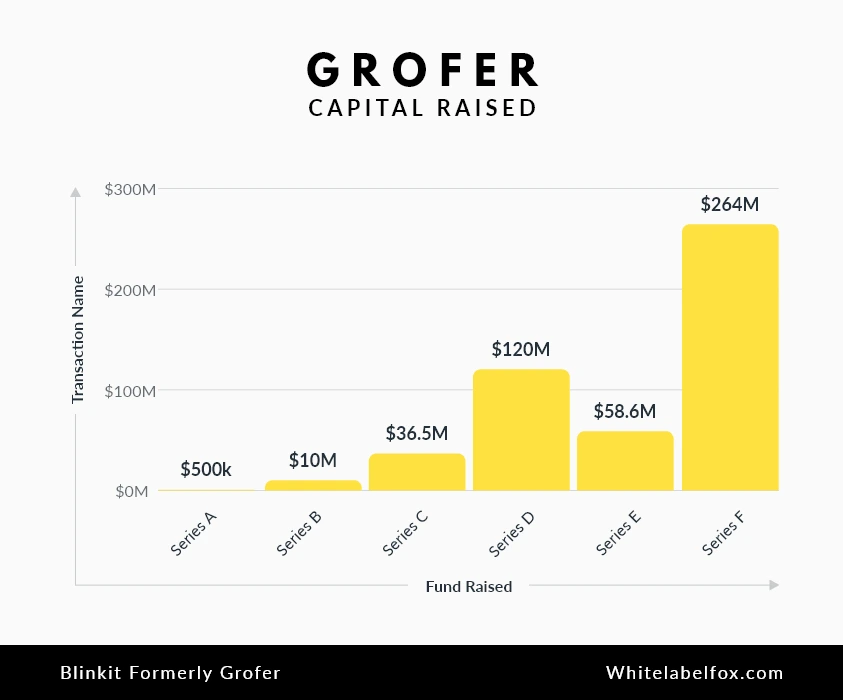
Grofers has expertise in express delivery to groceries space by developing dark stores across many cities. In 2021, the grocery delivery app Grofers reported delivering around 7000 groceries in Gurgaon in 15 minutes. Later it started offering 10 minutes delivery in 12 cities, making it easier for a delivery giant to make a special place in everyone’s heart.
Quick Overview Over Grofers Success Timeline
Founded Year: December 2013
Headquarters: Gurugram, India
Founder(s): Saurabh Kumar and Albinder Dhindsa
Services: Online shopping
Revenue: 2,289.2 crore in FY20
Employees: 2000+ (As of 2021)
Parent: Grofers International Pvt Ltd
Number of Grofers App Downloads: 22.7 million downloads
Number of Grofers Partner Stores: 5,000
Grofers is now operational in 27 Cities
Grofers Apps: iPhone | Android
Grofers Business Model Explained- How Does the Grocery Delivery Platform Work?
The online grocery ordering and delivery business have skyrocketed during a pandemic, with 43% of shoppers shopping online in the last six months. Consumers cited convenience (62%), time savings (42%), and COVID-19 concerns (62%), as the top three reasons for shifting to on-demand grocery shopping platforms. However, around 66% of people who shop online responded that real-time inventory visibility is essential.
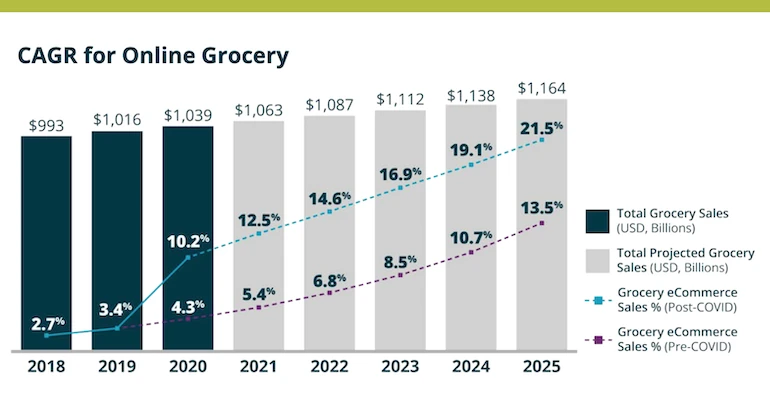
A grocery delivery app like Grofers always focuses on offering the best service to its customers, making it easier for a delivery giant to survive against Bigbasket and Amazon. The grocery delivery app is looking forward to another merger with BigBasket; they have an ordinary investor in Tiger Global; however, there are excellent possibilities that Flipcart will acquire the company shortly.
Many shoppers have become first-time shoppers from Grofers during pandemics, but now they’re expecting to continue with grocery shopping due to the convenience and comfort they get. The online grocery delivery platform, Grofers, has transformed its business model over the last few years.
Grofers business model mainly consists of three components, including:
- Local grocery supplies;
- Users/ Shoppers;
- Delivery provider.
The hyperlocal delivery business model of Grofers helps the grocery delivery platform stay ahead in today’s competitive market. All three components of Grofers’ business model help the company to bring great profit to their table. Recently Grofers has made minor changes to its business model to ensure the best experience is provided to the customers.
Grofers Business Model Updates: What Changes Can Be Measured?
At the initial stage, Grofers failed to generate the desired result. Due to low finance, the company got dissatisfied results in many cities where the grocery ordering and delivery platform is operational. However, the platform has updated its business model by shifting to an inventory-based delivery model from a hyperlocal delivery service to ensure its business success. Few crucial reasons play a vital role in Grofers’ hyper-local business model failure.
Unreliable and unusual nature of local supply chain with an app like Grofers, resulting in incomplete order affecting the delivery platform popularity among customers;
Many of Grofers’ competitors, including BibBasket, Amazon, and many follow an inventory business model, making it challenging for others to survive in a fiercely competitive market;
Poor quality from local vendors was dissatisfying, which increased an unhappy customer base.
The online grocery ordering and delivery platform face many issues and losses due to its business model. Hence, with a bit of twist, Grofers introduces a new model that helps the company make great profit and gain more happy customers quickly. In 2017, Grofers brought a few twists and turned to its business model, increasing its profit and customer base. The new Grofers business model consists of three elements:
- Inventory
- Customers
- Delivery Providers
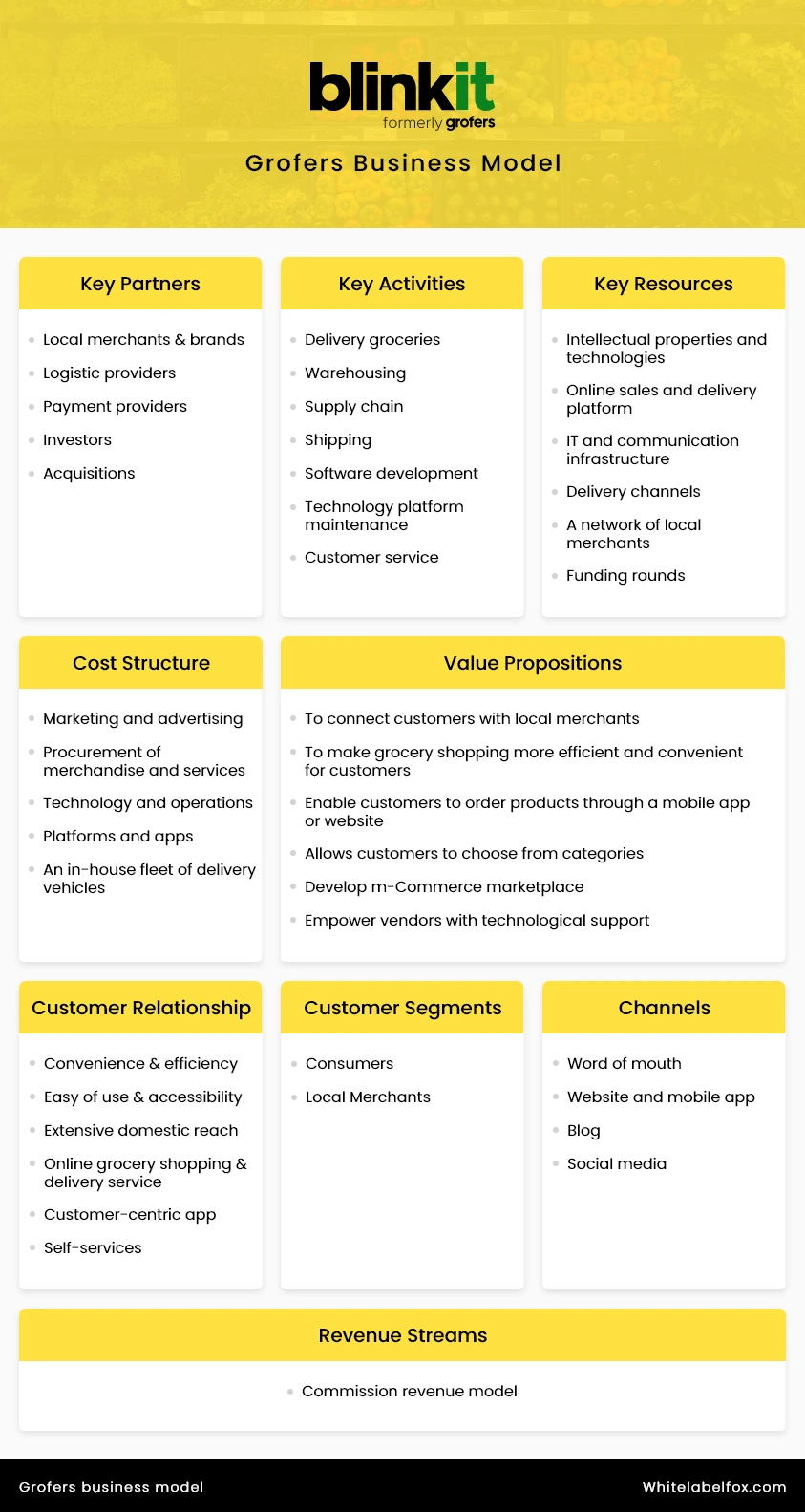
Grofers Inventory Based Business Model: How it Works?
Change in Grofers business model also changed its procedure to a great extent. The hyperlocal business model of Grofers connects local stores and customers, helping customers to order directly from stores. In contrast, in the inventory-based Grofers business model, products are delivered to customers from the company warehouse, ensuring the best and high-quality products are delivered to customers each time they place the order.
The step-by-step process Inventory based Grofers business model is as follows:
- Shoppers/customers place orders through app or website;
- The product is moved to Grofers warehouse, where staff check quality of product to make sure best and high-quality product is delivered to customers;
- Deliver executive collects the order from the warehouse and hand it over to delivery providers;
- Delivery providers then deliver the product to customers’ doorsteps.
Inventory based business model of Grofers helps the digital platform develop its ground in the online grocery ordering and delivery niche. Undoubtedly, Grofers competitors get a positive response in the market, but still, the company succeeds in making its place in the online grocery delivery space.
Grofers have greater control over the delivery process, guaranteeing the best grocery delivery service to all customers. The new business model of Grofers provided the company with promising results; you can even keep the same model as a central focus while developing grocery ordering and delivery solutions for your grocery business.
Grofers Revenue Model: How the Grocery Delivery Provider Makes Money?
Grofers’ inventory-based business model helps the company to offer the best delivery experience to its customers. The process involves partners, alliance partners, technology, etc. The grocery order and the delivery platform provides quick access to more than thousands of products.
All the products are stored at the company warehouse; Grofers uses its own infrastructure to connect and deliver the best product to its customers.
The company charges 8 to 15% from delivery partners on each order completed on its platform.Grofers has invested 15 million in original labels looking to the growing demand. The number shows the active participation of grocery delivery giants in the online ordering and delivery market.
What is the Need of an App Like Grofers?
The online grocery ordering and delivery market is undoubtedly a beneficial option to invest in an app like Grofers. You can invest in ready-to-use solutions from White Label Fox. Integrated with all essential features and modules, the digital delivery platform will definitely help you automate and scale up your business operations. There are numerous M-Commerce advantages that you can leverage by choosing to develop a digital platform similar to Grofers.
- It helps you provide quick access to your customers;
- It makes it easier for you to send instant notification
- Reduce operational cost;
- Improve productivity;
- Provide value to customers;
- Cultivate customer loyalty.
There are many more that you can leverage by considering developing an app similar to Grofers. If you aim to give your business a digital touch or have an app idea, we can help you. Feel free to contact us for development costs, features included, and more at [email protected].
Launch Your Grocery Business Online with App Like Grofers
Grofers is undoubtedly taking India’s online grocery market; hence developing an app similar to Grofers can provide you with numerous opportunities. Lucrative Grofers’ business and revenue model can help you achieve the desired success; just make sure to seek support from the best tech partner who can understand your business and market requirements and provides you with the best solution.
Frequently Ask Questions
Grofers is an Indian online grocery delivery service that allows users
to purchase grocery items and have them delivered to their doorstep. It
offers a wide range of products, including fresh produce, packaged
goods, household essentials, and personal care products. Customers can
place orders via the Grofers app or website, and the company fulfills
deliveries through a network of warehouses and local delivery partners.
Grofers generates revenue through several streams, including:
- Product Sales: The primary revenue comes from selling
groceries to customers. Grofers earns a margin on the products
it sells.
- Delivery Fees: While many orders come with free delivery
for users, Grofers charges a delivery fee for smaller or less
profitable orders.
- Subscription Model: Grofers offers subscription services
such as “Grofers Super” to customers, which provides benefits
like free deliveries, exclusive discounts, and faster delivery.
- Promotions and Ads: Grofers also generates revenue from
advertisements and promotions. Suppliers and brands pay Grofers
to feature their products on the platform.
- B2B Partnerships: Grofers may partner with businesses
like restaurants or cafes to deliver bulk groceries,
contributing to additional revenue.
- Product Sales: The primary revenue comes from selling groceries to customers. Grofers earns a margin on the products it sells.
- Delivery Fees: While many orders come with free delivery for users, Grofers charges a delivery fee for smaller or less profitable orders.
- Subscription Model: Grofers offers subscription services such as “Grofers Super” to customers, which provides benefits like free deliveries, exclusive discounts, and faster delivery.
- Promotions and Ads: Grofers also generates revenue from advertisements and promotions. Suppliers and brands pay Grofers to feature their products on the platform.
- B2B Partnerships: Grofers may partner with businesses like restaurants or cafes to deliver bulk groceries, contributing to additional revenue.
Grofers relies heavily on its in-house logistics network to manage
inventory and supply chain operations. It uses a combination of central
warehouses and city-based fulfillment centers to store products and
fulfill customer orders efficiently. Grofers uses real-time inventory
management systems to keep track of product availability and ensure
accurate order fulfillment.
- Warehouses: Products are stored at strategic locations to
minimize delivery time.
- Automation: Grofers employs automation and technology to
manage the supply chain and streamline the order fulfillment
process.
- Local Suppliers: By partnering with local suppliers and
farmers, Grofers ensures a steady supply of fresh produce and
goods.
- Warehouses: Products are stored at strategic locations to minimize delivery time.
- Automation: Grofers employs automation and technology to manage the supply chain and streamline the order fulfillment process.
- Local Suppliers: By partnering with local suppliers and farmers, Grofers ensures a steady supply of fresh produce and goods.
Grofers uses a sophisticated logistics system to ensure timely and
efficient delivery. The company uses:
- Delivery Fleet: Grofers manages its own fleet of delivery
personnel and partners with third-party logistics providers to
handle large-scale operations.
- Local Delivery Partners: To expand its reach and reduce
delivery time, Grofers employs delivery partners (e.g.,
freelancers) to transport goods from warehouses to customers.
- Real-Time Tracking: The app offers real-time tracking for
customers to monitor their deliveries, ensuring transparency and
customer satisfaction.
- Delivery Windows: Grofers offers flexible delivery time
slots to meet customer preferences, which helps increase
customer retention.
- Delivery Fleet: Grofers manages its own fleet of delivery personnel and partners with third-party logistics providers to handle large-scale operations.
- Local Delivery Partners: To expand its reach and reduce delivery time, Grofers employs delivery partners (e.g., freelancers) to transport goods from warehouses to customers.
- Real-Time Tracking: The app offers real-time tracking for customers to monitor their deliveries, ensuring transparency and customer satisfaction.
- Delivery Windows: Grofers offers flexible delivery time slots to meet customer preferences, which helps increase customer retention.
The key advantages of Grofers' business model include:
- Reduced Operational Costs: By operating a central
warehouse system and leveraging technology, Grofers minimizes
the need for a complex distribution network, leading to lower
operational costs.
- Convenience: The O2O model makes it convenient for
customers to order groceries online and get them delivered
directly to their homes.
- Scalability: The model is scalable, enabling Grofers to
expand to new regions quickly without investing heavily in
physical stores.
- Customer Loyalty: The subscription model encourages
customer retention by providing value-added benefits like faster
delivery and discounts.
- Freshness: Direct partnerships with local suppliers help
ensure the freshness of produce and reduce the time between
harvest and delivery.
- Reduced Operational Costs: By operating a central warehouse system and leveraging technology, Grofers minimizes the need for a complex distribution network, leading to lower operational costs.
- Convenience: The O2O model makes it convenient for customers to order groceries online and get them delivered directly to their homes.
- Scalability: The model is scalable, enabling Grofers to expand to new regions quickly without investing heavily in physical stores.
- Customer Loyalty: The subscription model encourages customer retention by providing value-added benefits like faster delivery and discounts.
- Freshness: Direct partnerships with local suppliers help ensure the freshness of produce and reduce the time between harvest and delivery.
Grofers competes with other online grocery delivery services, such as
BigBasket, Amazon Pantry, and Reliance Fresh, by differentiating itself
with:
- Affordability: Grofers offers competitive pricing on a
wide range of products, along with regular discounts and
promotions.
- Speed: The company focuses on faster delivery times, with
many orders fulfilled within a 2-hour window.
- Variety: Grofers offers an extensive range of products,
including local and organic produce, which appeals to a wide
range of customers.
- Technology: The Grofers app is user-friendly, allowing
customers to easily browse products, place orders, and track
deliveries.
- Subscription Services: Grofers’ subscription plans, like
“Grofers Super,” offer additional benefits like free delivery
and special discounts to keep customers loyal.
- Affordability: Grofers offers competitive pricing on a wide range of products, along with regular discounts and promotions.
- Speed: The company focuses on faster delivery times, with many orders fulfilled within a 2-hour window.
- Variety: Grofers offers an extensive range of products, including local and organic produce, which appeals to a wide range of customers.
- Technology: The Grofers app is user-friendly, allowing customers to easily browse products, place orders, and track deliveries.
- Subscription Services: Grofers’ subscription plans, like “Grofers Super,” offer additional benefits like free delivery and special discounts to keep customers loyal.
Despite its success, Grofers faces several challenges:
- Competition: Intense competition from other
well-established grocery delivery services and retail giants
like Amazon can impact market share.
- Customer Acquisition: Acquiring and retaining customers
in a highly competitive market requires constant innovation and
marketing efforts.
- Profitability: The delivery model can be expensive,
especially when dealing with perishable goods, and the company
must balance customer satisfaction with operational costs.
- Supply Chain Disruptions: Grofers is vulnerable to
disruptions in its supply chain, such as shortages or delays in
delivery, especially during peak demand periods or unforeseen
events like the COVID-19 pandemic.
- Delivery Time: Managing the logistics for quick
deliveries is a complex and costly process, particularly for
fresh produce and bulk orders.
- Competition: Intense competition from other well-established grocery delivery services and retail giants like Amazon can impact market share.
- Customer Acquisition: Acquiring and retaining customers in a highly competitive market requires constant innovation and marketing efforts.
- Profitability: The delivery model can be expensive, especially when dealing with perishable goods, and the company must balance customer satisfaction with operational costs.
- Supply Chain Disruptions: Grofers is vulnerable to disruptions in its supply chain, such as shortages or delays in delivery, especially during peak demand periods or unforeseen events like the COVID-19 pandemic.
- Delivery Time: Managing the logistics for quick deliveries is a complex and costly process, particularly for fresh produce and bulk orders.
Grofers is likely to continue expanding its operations and refining its
business model in the future. Key trends that could shape Grofers'
growth include:
- Expansion into New Markets: Grofers may expand into more
cities and regions across India and potentially even
internationally.
- Increased Automation: Further investment in technology
and automation could help improve the efficiency of its
logistics and supply chain operations.
- Personalization: Grofers may focus on personalized
shopping experiences by using AI and data analytics to recommend
products based on customers' preferences and purchasing history.
- Sustainability: With growing consumer interest in
sustainability, Grofers may introduce eco-friendly packaging and
source products from sustainable suppliers.
- Expansion into New Markets: Grofers may expand into more cities and regions across India and potentially even internationally.
- Increased Automation: Further investment in technology and automation could help improve the efficiency of its logistics and supply chain operations.
- Personalization: Grofers may focus on personalized shopping experiences by using AI and data analytics to recommend products based on customers' preferences and purchasing history.
- Sustainability: With growing consumer interest in sustainability, Grofers may introduce eco-friendly packaging and source products from sustainable suppliers.
The cost of developing an app like Grofers depends on several factors,
such as features, complexity, and platform:
- Basic App Development: For a basic grocery delivery app
with essential features like product listings, user
registration, payment gateway, and delivery tracking, the cost
can range from $20,000 to $50,000.
- Advanced Features: Adding advanced features like
real-time tracking, subscription services, AI-based
recommendations, and multi-platform support will increase the
cost to $50,000 to $100,000 or more.
- Maintenance and Updates: Ongoing maintenance, bug fixes,
and updates may cost 15-20% of the initial development cost
annually.
- Basic App Development: For a basic grocery delivery app with essential features like product listings, user registration, payment gateway, and delivery tracking, the cost can range from $20,000 to $50,000.
- Advanced Features: Adding advanced features like real-time tracking, subscription services, AI-based recommendations, and multi-platform support will increase the cost to $50,000 to $100,000 or more.
- Maintenance and Updates: Ongoing maintenance, bug fixes, and updates may cost 15-20% of the initial development cost annually.


